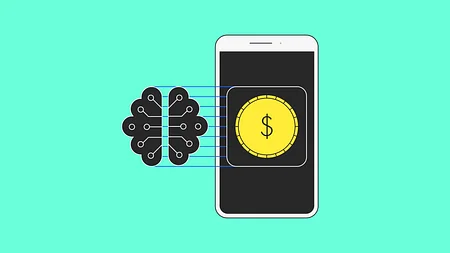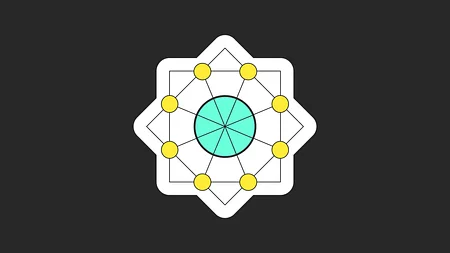Could femtech be better at solving banking problems than fintech?

“Money is a matter of functions four: a medium, a measure, a standard, a store.”
But, money is also a form of communication. Money has the power to communicate success, shame, inadequacy, desire, isolation, disdain, greed, support, addiction and resentment. Talking money is also one of society’s greatest taboos. Femtech has had to tackle its own set of taboo topics, so in the spirit of International Women’s Day I’m looking at a thing or two fintech could learn from femtech.
This is taken from our Unfiltered newsletter. Subscribe now for a no BS, uncensored analysis of fintech news and hot topics delivered to your inbox each fortnight.
Femtech 101 👩🎓
Femtech took 2020 by storm. Female-led startups are disrupting the language and conversations pertaining to women’s health and wellbeing, using technology to make healthcare accessible in new ways and to more women.
I’m interested in taking inspiration from these ideas and how they are subverting our biases, economic models, our design expectations, and the status quo.
Recently a friend was chatting to me about this new period tracking app she had downloaded. As she was showing me the features and data visualisation, telling me how genuinely interesting, insightful and helpful it was, I felt ashamed that it had only just dawned on me that I should have been looking at these apps for inspiration before running design sprints. They all of a sudden seemed to have huge relevance when thinking about design problems relating to monthly pay cycles.
Think about the interface of monthly cycles and pay day and how that looks within an app or banking dashboard. Traditionally the graphics and visuals depicting your in-goings and outgoings are often pretty boring. Yes, they’re getting better and more engaging than they used to be, but they still kind of all look the same...
Surely there must be shared insights from many people’s lives, feeling dictated to by the monthly arrival of their salary, as women are on the arrival of their period.
Taking note of the disruption and success from other sectors can inspire better data visualisation and in-app features that could be game changing for our own sector.
Femtech UX/UI lessons for fintech ♀️
The design systems we ideate around should help us feel in control of our finances, salaries and cash flow in a more human way that recognises the chaos and emotion that accompanies the more predictable rhythms of life. This will become all the more important as we see more embedded finance journeys as banking as a service really takes off.
Here are my picks for femtech best in class 🔥
- Natural Cycles (Founder, Dr Elina Berglund) is designed to help women track their fertility. The interface and UX copywriting balances out scientific cues that drive trust (which banks and financial service providers need to do) with a human touch that breaks down complex and esoteric facts and myths around navigating your fertility cycle. It’s end goal is to give women reliable information about their fertility so they can make behavioral decisions that will have a big impact on their lives. This seems highly relevant to our ‘job to be done’ in fintech, helping users make behavioural designs that have a big impact on their financial wellness.
- Flo (actually founded by two men, Dmitry and Yuri Gurski) is a period tracker and ovulation calendar and it’s the #1 most downloaded health app in the app store with 38M active monthly users. The app lets users log over 70 symptoms and activities to get the most precise AI-based period and ovulation predictions. Flo’s secret chats function allows users to discuss intimate topics, ask questions anonymously and get support from millions of women worldwide. I wonder what personal finance communities, chat-bots and customer service in finance - those who can have an impact on debt, gambling addiction and mental health associated with finances - can learn from how these sensitive topics are handled?
- Elvie (Founder, Tania Boler) develops femtech hardwear, including a silent wearable breast pump and a pelvic floor exercise trainer. What makes this particularly interesting is how these products are app-connected. The Kegel trainer helps women with five-minute workouts providing real-time biofeedback. The breast pump monitors milk volume in real-time, tracks pumping history for each breast and can be operated remotely. The concepts underpinning the design of the proposition are all too relatable to fintech product roadmaps: tracking history of payments, visibility over different accounts, and having foresight over how much you might spend based on your previous patterns. The contextual data and gamification of the Elvie timers and workouts makes for clever UX that nudges behaviour in motivating ways and the visualisation makes for really beautiful UI. Blending hardware products with end to end digital experiences is also interesting as we think about phygital experiences in finance.
My unfiltered opinion
The term femtech is not popular with everyone. Research from Harvard Business School raises a very valid point that “identify-based labelling” can contribute to people “unwillingly reduced to a single category”, Quartz discusses how the label can propagate stereotypes only to further marginalize. However, I take these examples from the femtech space as a nod to the women who are paving the way for new and better conversations about what it means to be a human in this world. As a researcher I believe that fintech has a responsibility to humanise money to reshape how it is accessed and what it makes possible.
I challenge you and the fintech industry to take inspiration from other sectors that are also leveraging technology, to question and subvert legacy ideas, taboos and stale ideas.
Fintech plays a big role in shaping cultural narratives about what money should mean and how money should move. Many deep rooted and unhelpful culturally ingrained standards about money are difficult to shift. This means that they can seep into our meetings and design sprints without us even realising.



